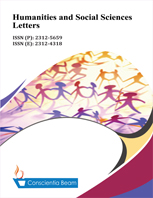Constructing an Instrument for Assessing the Internalization and Actualization of Cultural Values toward English for Foreign Language Learners
DOI:
https://doi.org/10.18488/73.v10i1.2925Abstract
This study is aimed at developing an instrument to assess learners’ internalization and actualization of cultural values through English for foreign language learning. The five phases of instructional design proposed by Cennamo and Kalk (2019) guided the research and development. The five phases of instructional design include (1) defining key terms and exploring the need to develop an instrument from a practical perspective while taking into account any theoretical gaps; (2) creating the instrument grid design and table of specifications for the design; (3) developing and modeling the instrument; (4) refining the instrument using input from forum group discussions and expostulating with expert judgments; and (5) presenting the product and testing it to the learners. The research consisted of a questionnaire, observation, and interview guide. The technique used to analyze the data was an exploratory factor analysis (EFA) with the factor loading determined by the number of samples in this research. We used the Kaiser-Meyer-Olkin (KMO) test to measure data sufficiency with levels greater than 0,05 (KMO>0,05). After analyzing the data, the results revealed 0,587 with the significance of 0,000 showing that, for assessing internalization and actualization of cultural values, there were 25 items with seven factors: deserving the value of achievement, self-confidence, creativity, respect, discipline, nationalism, and tolerance.

